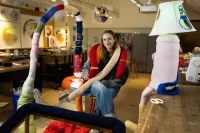
For her campus job, Alex Provasnik ’25 of Arlington, Va., works as an assistant in the college’s ceramic studio, located in Olin Arts Center.
The job is a surprisingly good fit for the Bates junior, incorporating skills she’s learned not only in one major, art and visual culture, where she is on the studio art track, but also in chemistry, her second major.
Provasnik is one of 716 students, or 40 percent of the Bates campus enrollment of around 1,800, who have at least one campus job this semester. They work in more than 70 campus offices and programs, such as Dining Services, Facility Services, Post & Print, Ladd Library, Athletics, and many academic departments.
Many students work as part of their financial aid package; however, campus jobs are open to all students, many of whom quickly learn, as Provasnik has, that campus work can be purposeful and enjoyable.
Provasnik spends most of her time on the job in the studio’s glaze kitchen, located just off the teaching studio space, where she mixes glazes that give a piece of pottery its glass-like coating.
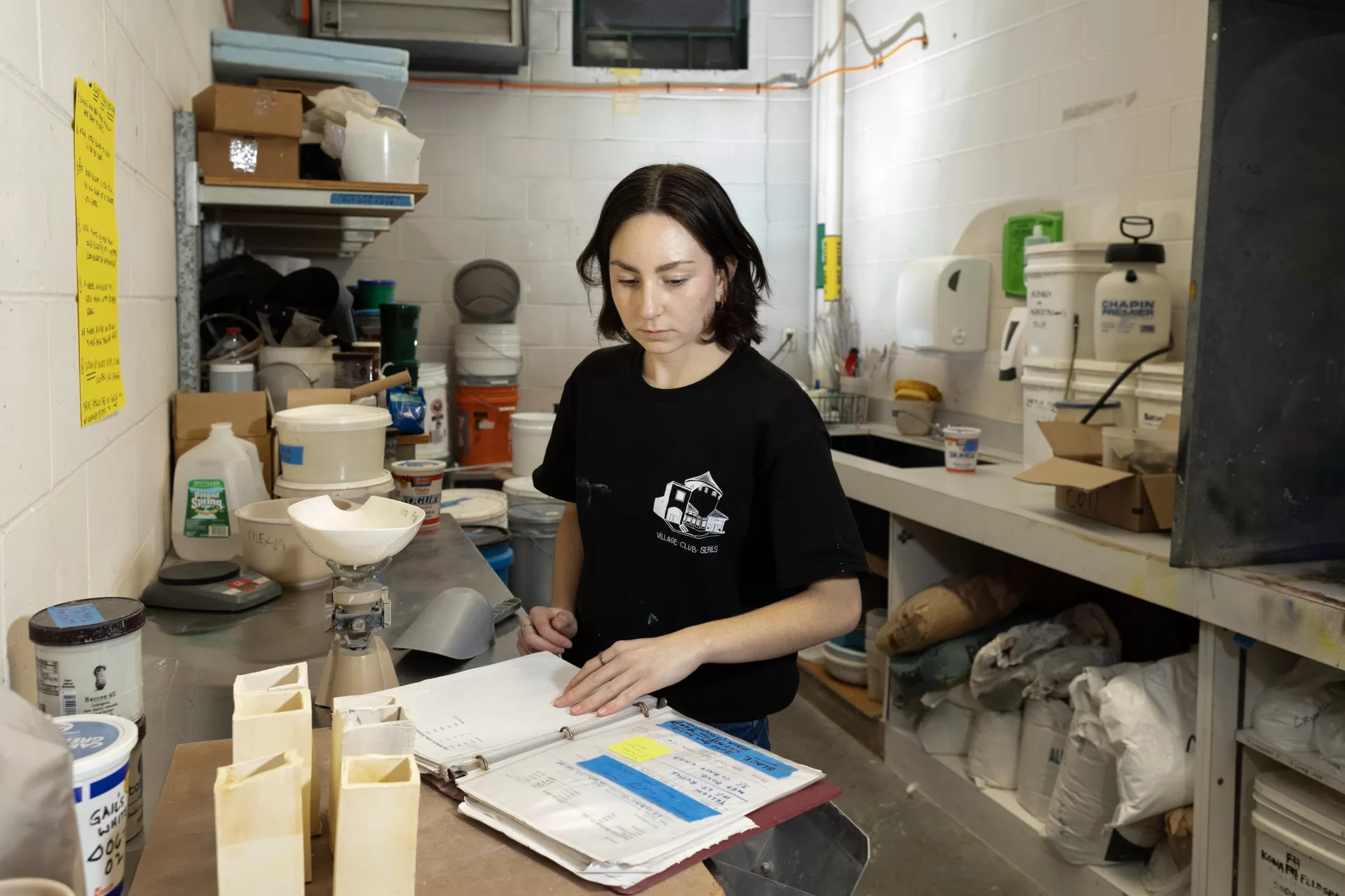
Masks lay at the entrance, readily available for when mixing is in progress. Inside, industrial-grade metal containers filled with raw materials line the walls. Large and small plastic buckets of mixed glazes dot the open counter space.
The glaze formulas that Provasnik uses are new and old — some “recipes” are time-tested and duly recorded in a deep-red binder. Others are still to be tested, not yet ready for the binder.
Provasnik’s work supervisor is the artist Susan Dewsnap, a lecturer in art and visual culture, who teaches students the ins and outs of creating artwork from clay. For Provasnik, she’s a supervisor and a mentor.
“My process as an artist has become a lot more developed from working with Susan. She has really pushed me to research artists and styles and to flesh out my artistic ideas.”
Here is more of our conversation:
What does a ceramic studio assistant actually do?
I help prepare and make up different materials that are needed for classes as well as help with other tasks like firing work, reclaiming clay, and just general studio upkeep. I primarily work in the glaze kitchen.
I had already helped with a lot of the tasks I do now, either in a class or during my independent study, so it’s nice to be getting paid for that time now!
What is involved in creating glazes?
Ceramic glazes are made up of three basic categories of ingredients: a glass former like silica; a stabilizer like alumina; and a flux which lowers the melting point of the materials. There can be sometimes close to 15 different ingredients that need to be precisely weighed out and combined.
These are in powdered solid forms so I have to wear a mask and have a ventilation fan running while I do this. After all of the ingredients are added to water, I mix them with an electric drill. In order to make sure everything is combined as evenly as possible, the entire mixture is sieved multiple times, through finer and finer mesh sieves.
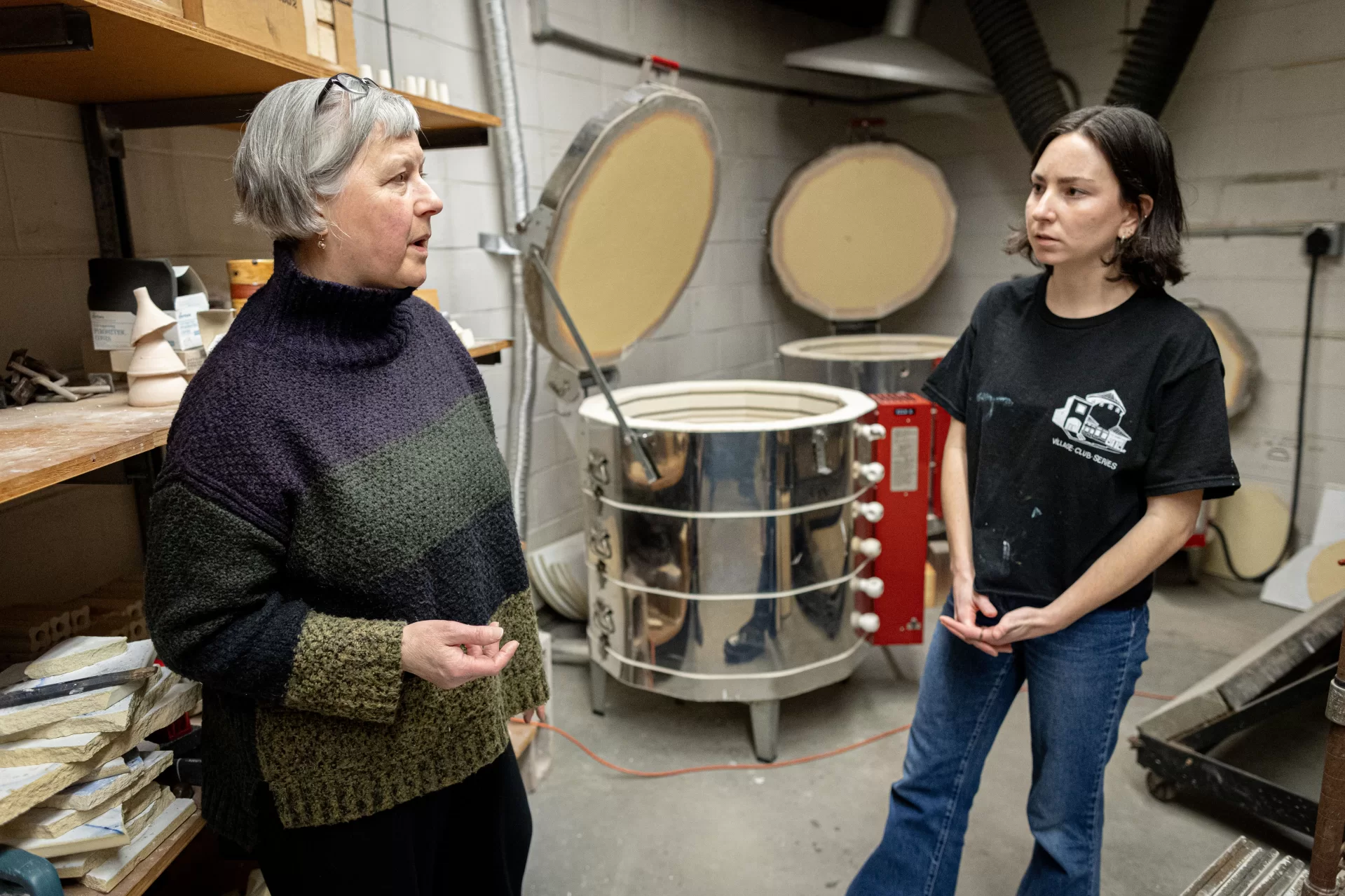
The whole process can easily take up to an hour or two depending on what type of glaze and how much of it you are making. It’s often very messy!
Why do you enjoy the glaze work so much?
As a chemistry major and studio art major, I am particularly interested in all the chemistry involved in ceramics and art, in general.
If you look at any ceramic glaze recipe you are going to see a lot of chemistry. Not only are most of the materials written in their chemical formulas, but you are also dealing with concentrations as well as oxidation and reduction reactions depending on the type of firing you are doing.
I love how this job not only teaches me so much about ceramics and gives me valuable experience in running a studio, but it also incorporates chemistry.
What is something about your job that most people may not know about? I saw part of the job is being able to lift 25 pounds!
That would be the bags of clay that students use in classes, which weigh 25 pounds.
I think a lot of people are unaware of just how much hands-on labor and physical activity is required to make ceramics: sourcing materials; mixing everything needed for surface decor, like glazes, slips, and stains; programming the kilns; and firing all the work.
You load pieces into a kiln to bisque fired to harden the clay. Then that kiln must be unloaded and the work is glazed. Next, the glazed pots are reloaded into the kiln again — taking special care to make sure none of the pieces touch because if they do, they fuse. They’re ruined.
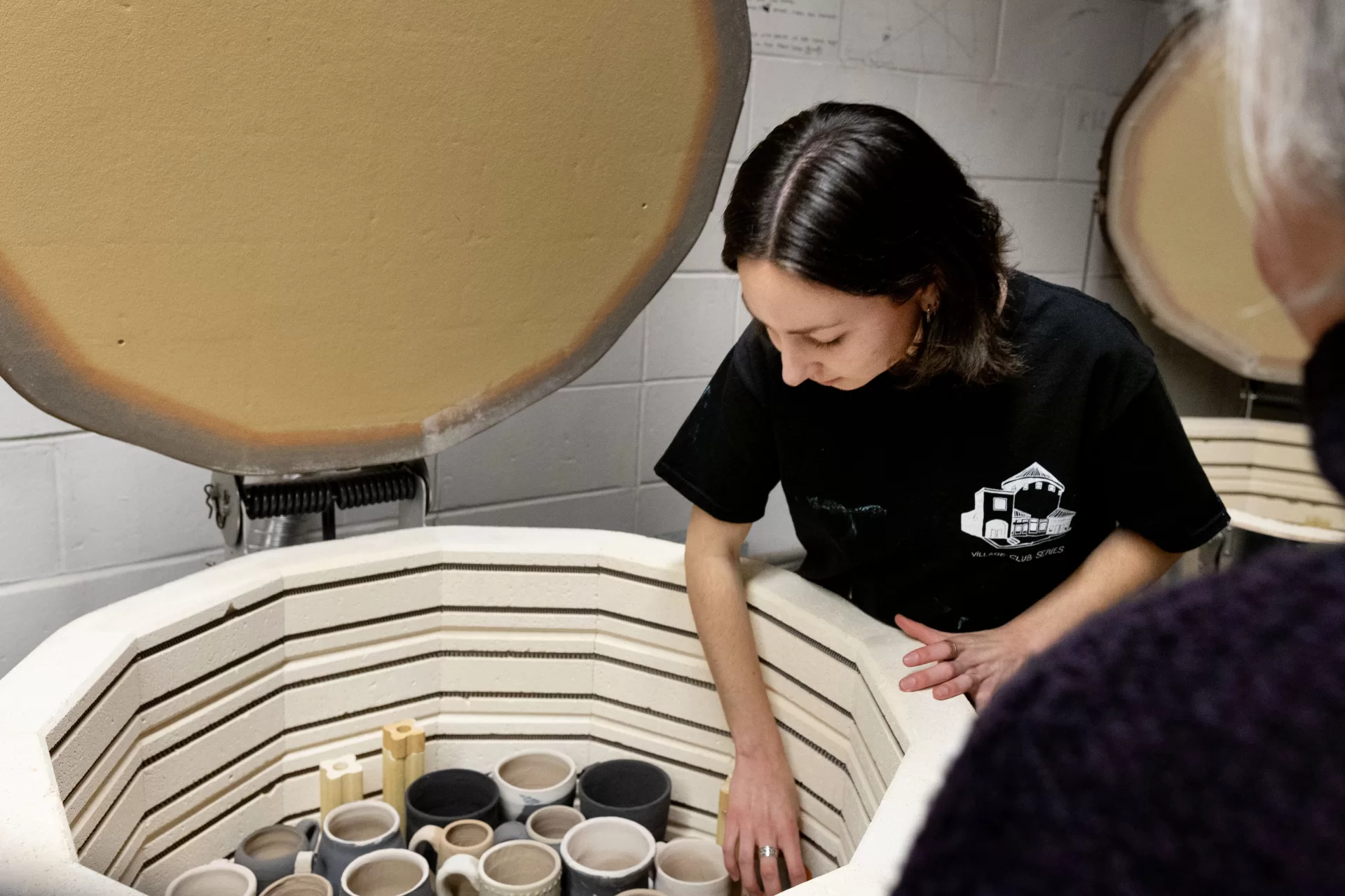
And while the kiln is running it’s a bit more complicated than just turning on a switch. Temperature changes have to be either pre-programmed or made manually at certain times to follow the proper firing schedule.
It’s not unusual for things to go wrong during the firing process so there is often clean up required afterwards, like sanding off glaze that may have fused to the kiln shelves.
Another thing people often don’t consider is just how much time and experimentation goes into making glazes. People can pick their glaze from a test tile but aren’t aware of how much testing is required to create a glaze recipe that reliably comes out looking the way you want.
Pretty much all of the glazes we use at Bates are well-tested recipes, but occasionally either Susan or a student will make test batches and experiment with something new.
Also there are often material shortages or changes in the chemical makeup of different materials we use in our glazes. When this happens it can mean that what was once a reliable glaze is now not coming out the same and different recipes or materials have to be experimented with and tested out.
Is reclaiming clay difficult? Does it require effort?
Yes, it’s a huge pain — a lot of work and very messy.
To reclaim clay, you take a bunch of clay scraps and dried pieces — really anything you are not using. You fully dry it out, until it’s bone dry, then dissolve it in water.
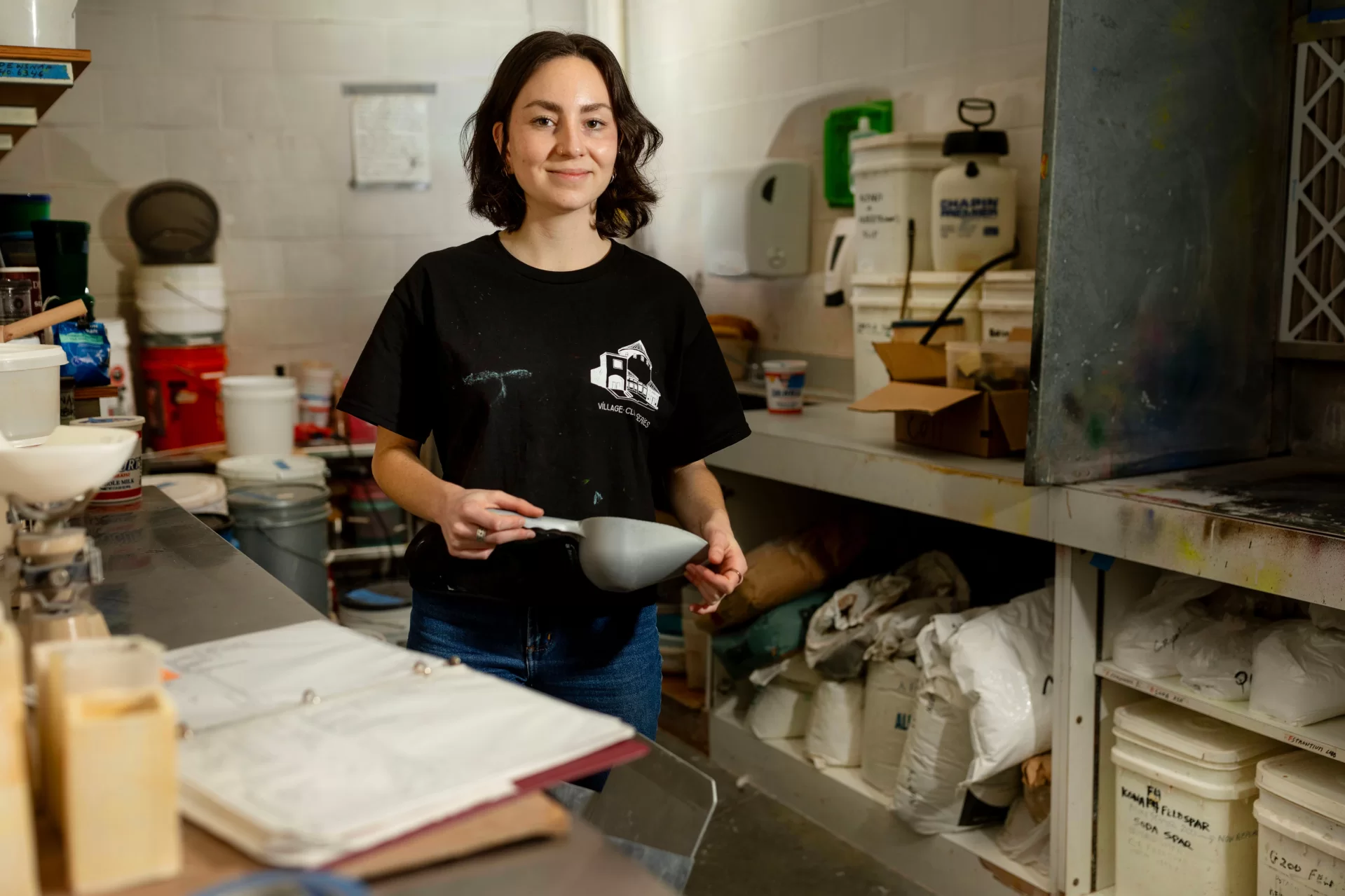
You scoop out the clay onto plaster, and it sits and dries out for a day or two. It really depends on how much heat is on in the classroom or how humid it is outside — it all affects how long you have to let the clay sit. Then, you wedge it all up to remove air bubbles, homogenize it, and improve its plasticity. Wedging takes a lot of physical work.
What is something unexpected about this job? How were your expectations for your work different from reality?
I wasn’t expecting all the questions! I help Susan answer questions from students — whether their projects are too dry or how many coats of a material should be applied.
Helping out has let me meet students. It is nice to be able to answer their questions and share the knowledge I have about something I love.
What has been the highlight of your fall?
This fall, we’ve been exploring new formulas with synthetic materials.
For example, last night I mixed up a glaze with a synthetic black iron oxide. We had used raw, mined iron oxide, which had a particle size which left speckles in the glaze. The synthetic-based glaze creates the clear and transparent amber glaze we were looking for.
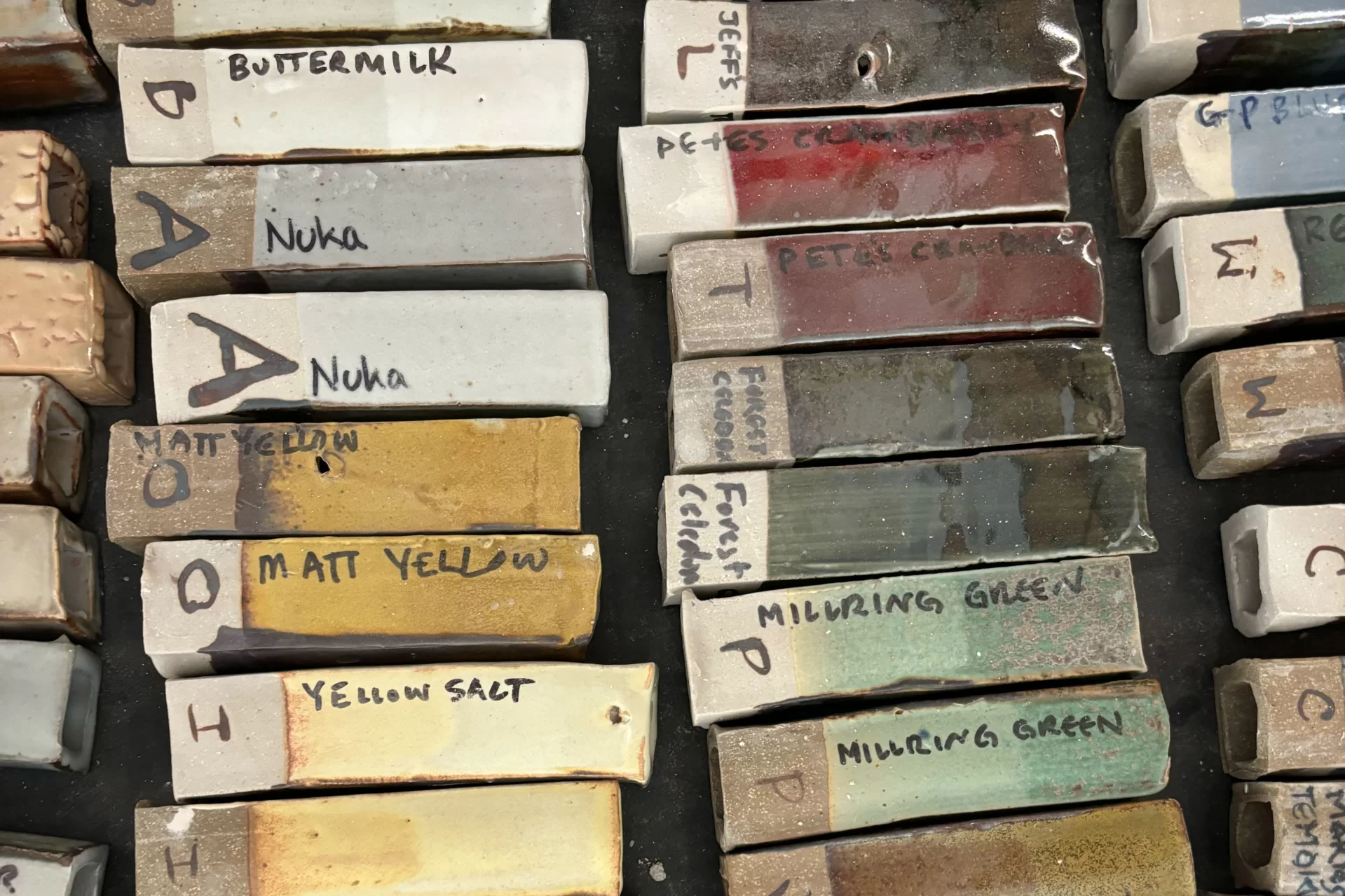
That said, we now have a speckled glaze and a transparent glaze and students like to use both for their variations. Playing with formulas in the glaze kitchen is always exciting.
What’s your favorite thing you’ve made?
Mugs — I use them every day. I have two mugs in my room, one that I made my freshman year and one that I made my sophomore year. I make a lot of functional pottery, so it’s nice to use something that I’ve made.
Actually, I might change my answer. I have some bowls that I’ve used during dinner parties and brunch with friends. I really love cooking food for people and serving it in dishes that I have made — it’s really sweet.

